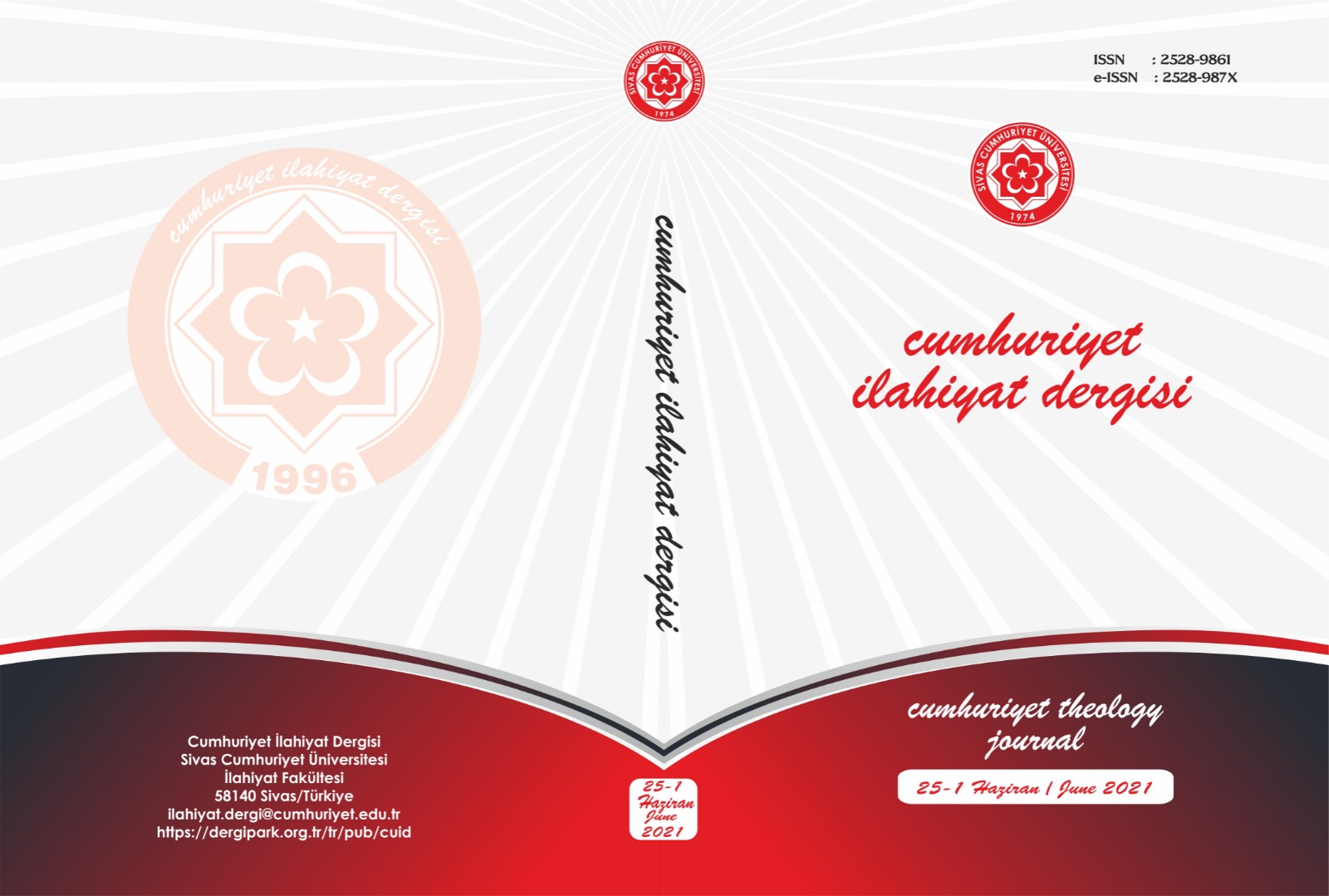İslâmî Kaynaklar Açısından Peygamberlerin Konuştuğu Diller
Languages Spoken by the Prophets: According to Islamic Sources
Author(s): Luay Hatem YaqoobSubject(s): Language studies, Theology and Religion
Published by: Cumhuriyet Üniversitesi İlahyat Fakültesi
Keywords: Arabic Language and Rhetoric; Linguistics; Languages Spoken by the Prophets; History of Languages; Semitic Languages; Linguistic Geography;
Summary/Abstract: The topic of The Prophets' Languages has led to a broad interest due to the sacred status of the Prophets. It has been of interest to people of all religious and social orientations. Despite the complexity of this topic and the necessity of studying it from various aspects such as archaeology and the study of ancient calligraphy, we limited our study to Islamic sources and references only. We extrapolated what was mentioned in these books. Other than the Holy Qur’ān, it will be concerned with books of interpretation, history, biography, hadith, its explanations, language books, etc. This study has been divided into three main points, an introduction, and a conclusion. The first point dealt with the origin of the languages spoken by the Prophets (peace be upon them) and their proximity to each other: Syriac, Coptic, Hebrew, Aramaic, and Arabic. All of these languages belong to the Semitic language. In terms of their convergence and similarity with each other, some linguists considered it dialects of one language, the Semitic language of origin. It has branched out from it as a result of the expansion, development, and development of life. Looking at today, the dialects of the Arabs in Egypt, Morocco, Jazira, the Levant, and Iraq, each branched out and most of it emerged from the mother tongue Arabic. There is a discussion among researchers on which of the languages are closer to the Semitic language. Four languages are listed as possibilities: Hebrew, Babylonian, Assyrian, Syriac, and Arabic. The truth is that it is not easy to get to know the origin of the Semitic language, and everything that has been said is not outside the circle of speculation because of the loss of definitive evidence and the temporal dimension. As for the second point, this study investigated the linguistic geography that the Semitic language covered and spread in, by tracking the people who spoke the Semitic language, their places of residence, and their influence, as all of them settled in the Near East and its vicinity. If we look at the Semitic language, with its eastern and western branches, we see that it was concentrated in Babylon, Assyria, Mesopotamia, Arabia, Yemen, the Levant, and Jerusalem regions, and among the most famous tribes and nations that settled in this region are Saba, Himyar, Ad, Thamud, Jirhm, Samaria, Nabat, the people of Palmyra and others. Mostly likely, the Arabian Peninsula is the cradle of the Semitic people, although some say that Abyssinia was the cradle of the first Semites. In the third point, the number of prophets and messengers mentioned in the Noble Qur’ān was enumerated in clear terms. Among the twenty-five prophets are the following: Adam, Idris, Noah, Hood, Saleh, Lot, Ibrahim, Ismail, Ishaq, Jacob, Yusef, Shuaib, Ayyub, Dhu al-Kifl, Yunus, Moses, Aaron, Elias, Al-Isa, David, Solomon, Zakaria, Yahya, Jesus, and Muhammad (peace be upon them). The study of this point came by following the inductive and deductive approach, whereby the first approach is based on extrapolating the life of each prophet in isolation from others in detail, tracing his life, place of living, and residence, whom he married etc. The deductive method relied on deducing the language that each of the prophets (peace be upon them) spoke. Some prophets mentioned the name of the language in which he spoke in the Islamic sources. This study concluded that of the prophets mentioned in the Noble Qur’ān, seven of them spoke the Syriac language, three of them spoke the ancient Egyptian language (Coptic), eighteen of them spoke the Hebrew language, three of them spoke the Aramaic language, and nine of them spoke in Arabic. Some of the prophets spoke one language while others spoke more than one language due to their numerous travels and the people they interacted with. This study is considered a preliminary study to open the field for in-depth studies for researchers in this field, and every part mentioned in this research is suitable for being an independent scientific study in its own right.
Journal: Cumhuriyet İlahiyat Dergisi
- Issue Year: 25/2021
- Issue No: 1
- Page Range: 385-407
- Page Count: 23
- Language: Turkish

